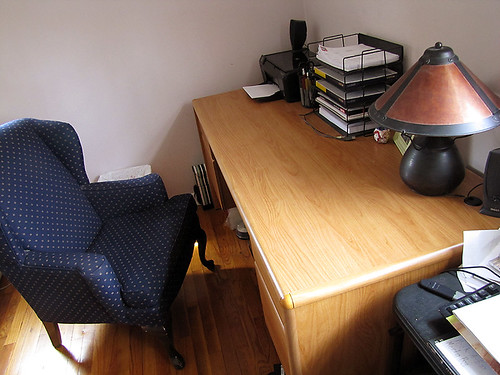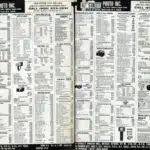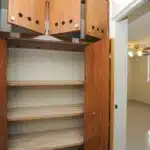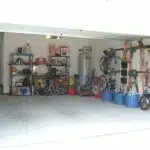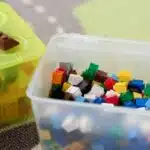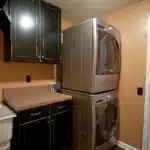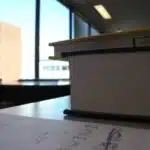Paper clutter is a common problem that plagues many homes and workplaces. It can be overwhelming to deal with stacks of paper that seem to grow exponentially day after day. The stress and chaos caused by paper clutter can also affect productivity, causing delays in decision-making and hindering progress towards goals.
As a professional organizer and productivity consultant, I have helped many clients overcome their struggles with paper clutter. In this article, I will share effective strategies for dealing with paper clutter once and for all. These strategies are practical, easy-to-implement, and designed to help you take control of your space, increase your productivity, and ultimately achieve your goals. By following these tips, you’ll be able to create a more efficient work environment that allows you to focus on what matters most – serving others.
Understanding The Impact Of Paper Clutter On Your Life
Like a heavy backpack weighing you down on a hike, paper clutter can have a similar impact on your life. It might not seem like much at first, but as it accumulates over time, it can become overwhelming. Recognizing the stress that paper clutter can cause is the first step in addressing it.
Paper clutter can lead to feelings of anxiety and frustration, as well as physical clutter in your space. This can make it difficult to focus on important tasks and prioritize your time effectively. When you are surrounded by piles of paper, it can be challenging to determine what needs immediate attention and what can wait.
To combat these negative effects, it is important to prioritize tasks and develop systems for managing your paper clutter. By doing so, you will gain a greater sense of control over your space and reduce the stress that comes with disorganization. In the next section, we will identify the causes of paper clutter and explore strategies for preventing its buildup.
Identifying The Causes Of Paper Clutter
Identifying the root causes of your paper clutter is crucial in dealing with it once and for all. It’s important to understand that paper clutter is not just a physical problem but also a mental one. The accumulation of papers can be caused by various factors such as procrastination, lack of organization skills, poor time management, and even emotional attachment to documents.
Understanding how your habits contribute to paper accumulation is the first step in identifying the root causes of your paper clutter. For instance, if you’re someone who procrastinates on tasks or postpones decisions, you may end up with piles of papers that need to be dealt with later. Similarly, if you don’t have an effective system for organizing your papers or managing your time, you may find it challenging to keep up with the paperwork.
Moreover, emotional attachments can also play a role in accumulating paper clutter. You may hold onto papers because they represent something sentimental or remind you of a particular memory. Whatever the reasons may be, recognizing them will help you address them effectively and work towards reducing your paper clutter. Once you’ve identified the root causes of your paper clutter, it’s time to move on to sorting through your paper stacks and finding meaningful ways to organize them.
Sorting Through Your Paper Stacks
Taking the time to properly organize your paper files can be a daunting task, however, it can be an effective way to reduce the amount of clutter that can accumulate in the home or office.
Decluttering your desk is an effective way to start the organization process and make it easier to manage the paper files that you want to keep.
Establishing a system of categorizing and sorting documents can help to create structure and make it easier to locate files when needed.
Setting up filing cabinets or folders to store documents that need to be kept is a great way to keep your desk and home organized.
Determining which documents to keep and which to discard can be difficult, but it is essential for effective paper management.
Recycling old documents that are of no use is a great way to ensure that paper clutter does not become a problem again in the future.
Organizing Your Files
Upon opening your file cabinet, you might feel overwhelmed with the sheer amount of paper clutter before you. To alleviate this stress, it is essential to organize your files effectively. One useful tip for organizing your files is to create labels that clearly indicate the contents of each folder. This simple step will save you time and energy in locating important documents when needed.
Another effective strategy for organizing your files is to utilize color coding. By assigning a specific color to each category or type of document, you can easily distinguish between different folders at a glance. For example, green could signify financial documents while blue could represent personal correspondence. Color coding not only makes it easier to locate particular folders but also adds a visual element that can make your filing system more aesthetically pleasing.
In conclusion, organizing your files is an essential step in dealing with paper clutter once and for all. Creating clear labels and utilizing color coding are two simple yet effective strategies that can help streamline the process. With these tools at your disposal, you can take control of your paper stacks and reclaim valuable space in both your office and mind.
Decluttering Your Desk
Maximizing productivity requires more than just organizing paperwork. Your physical workspace can also have a significant impact on your effectiveness and efficiency. A cluttered desk may be hindering your ability to focus and complete tasks, causing unnecessary stress and anxiety. Therefore, it is crucial to declutter your desk and create an inspiring workspace that promotes productivity.
Decluttering your desk involves removing all unnecessary items and organizing the remaining essentials in a way that makes them easily accessible. Begin by sorting through any loose papers or documents and deciding which ones are necessary to keep on your desk. Consider implementing a filing system or utilizing digital storage options to reduce the amount of paper clutter on your desk.
Once you have eliminated excess items, it’s time to create an inspiring workspace that maximizes productivity. This can involve adding personal touches such as plants or artwork that evoke positive emotions and increase motivation. Additionally, consider incorporating organizational tools such as desktop organizers or trays to keep essential items within reach but still tidy. By decluttering your desk and creating an inspiring workspace, you can optimize your productivity and reduce stress levels in the workplace.
Recycling Old Documents
One of the most important steps in decluttering your desk is sorting through your paper stacks. Many people accumulate large amounts of paper clutter over time, which can make it difficult to stay organized and productive. To begin this process, it’s essential to review all documents and decide which ones are necessary to keep on hand. Sometimes, there may be sensitive or confidential information that needs to be shredded before disposal.
Recycling old documents is an excellent way to reduce paper clutter and promote sustainability in the workplace. For example, instead of throwing away old magazines, consider donating them to local libraries or community centers. This not only helps clear space on your desk but also benefits others who may find value in the information contained within those publications.
When sorting through your paper stacks, it’s crucial to establish a system for keeping essential documents organized and easily accessible. This could involve creating labeled folders or utilizing digital storage options for important files. By taking the time to declutter your desk and establish an effective organizational system, you can reduce stress levels and optimize productivity in the workplace.
Creating A System For Organizing Your Paperwork
One of the most effective ways to tackle paper clutter is by creating a system for organizing your paperwork. This involves setting up a structured approach to dealing with your documents, so that you can easily store and retrieve them when needed. Color coding and labeling are two methods that can help you achieve this.
Color coding involves assigning specific colors to different types of documents or categories. For example, you may choose to use red for bills, blue for financial statements, and orange for medical records. This helps you quickly identify what type of document you are looking at, and makes it easier to sort through papers when organizing them. Labeling is also important because it helps ensure that all your documents are clearly marked with relevant information such as the date received or the sender’s name.
Once you have sorted through your papers and identified what needs to be kept, shredding and recycling any outdated or unnecessary documents is crucial. This helps free up space in your filing system while also reducing clutter. Be sure to securely shred any sensitive information before disposing of it properly.
Transition into the subsequent section: In order to maintain an organized system, setting up a filing system is essential.
Setting Up A Filing System
Imagine a library without a cataloging system. Books would be strewn about haphazardly, with no rhyme or reason to their placement. It would be nearly impossible to find the book you need. In much the same way, attempting to navigate your paper clutter without a proper filing system can be overwhelming and unproductive.
The first step in setting up an effective filing system is to choose a method that works for you. Some people prefer traditional alphabetical or chronological systems, while others may opt for more creative methods such as color coding or labeling. Regardless of which method you choose, it is important to stick to it consistently.
One effective technique for organizing paper clutter is through the use of color coding and labeling. This method involves assigning different colors to various categories of documents and then labeling them accordingly. For example, all financial documents could be labeled with blue stickers, while medical records could be labeled with red stickers. This not only makes it easy to quickly locate specific documents but also adds an element of visual organization that can help reduce stress when dealing with large amounts of paperwork.
Transition: Now that we’ve discussed effective physical filing techniques, let’s explore how implementing a digital filing system can further streamline your paper clutter management.
Implementing A Digital Filing System
Having a well-organized filing system is a great way to keep paper clutter under control, but it’s not the only solution. For those who want to take things a step further, digitizing their documents can offer many benefits. Converting physical documents to digital format can free up valuable space in the home or office, reduce the risk of loss or damage due to fire or other disasters, and make it easier to access important information quickly and easily.
One of the biggest advantages of digitizing your documents is that it allows you to store them electronically, which means you can access them from anywhere with an internet connection. This can be particularly helpful for people who travel frequently or work remotely. Additionally, electronic documents are much easier to search and organize than paper ones, which means you can find what you need quickly and without having to dig through stacks of paperwork.
Converting physical documents to digital format may seem like a daunting task at first, but there are many tools and resources available that can make the process easier. Scanners and document management software are widely available and affordable these days, making it easy for anyone to get started with digitizing their important papers. With a little time and effort invested upfront, converting your physical documents to digital format can pay off in big ways down the road.
To take things even further when dealing with paper clutter once and for all, reducing junk mail and unnecessary paperwork is also essential. Many people receive far more mail than they actually need or want – catalogs they never ordered, credit card offers they don’t need, and so on. By taking steps to reduce this incoming clutter – such as opting out of mailing lists and signing up for electronic statements instead of paper ones – people can cut down on the amount of paper entering their homes or offices in the first place.
Reducing Junk Mail And Unnecessary Paperwork
- Opting out of unwanted mail is an effective way to reduce the amount of junk mail and other unnecessary paperwork that can accumulate.
- Organizations such as the Direct Marketing Association provide resources to help individuals and businesses unsubscribe from unwanted mail.
- Recycling unneeded paper is also an important step in the process of reducing paper clutter.
- Utilizing a recycling system to properly dispose of paper can help to limit the amount of paper waste and unnecessary paperwork.
Opt-Out Of Unwanted Mail
Have you ever felt overwhelmed by the amount of junk mail and unnecessary paperwork that floods your mailbox? It’s frustrating to constantly sort through stacks of paper, only to find that most of it is irrelevant. Fortunately, there are ways to reduce the amount of paper clutter in your life. One effective method is opting out of unwanted mail.
To start, look for unsubscribe requests on any promotional or marketing materials you receive. Many companies provide an option to stop receiving future mailings, either through a physical form or an online portal. Take advantage of these opportunities whenever possible.
Additionally, consider using opt-out services like DMAChoice.org or CatalogChoice.org. These websites allow you to remove your name from mailing lists for various types of mailings, such as catalogs and credit card offers. While it may take some time for the changes to take effect, opting out can significantly reduce the amount of junk mail you receive over time.
By taking proactive steps to opt out of unwanted mail and utilizing opt-out services, you can effectively reduce the amount of paper clutter in your life. Not only will this save you time and frustration in sorting through irrelevant mailings, but it can also benefit the environment by reducing paper waste. So why not take a few minutes today to start decluttering your mailbox?
Recycle Unneeded Paper
After reducing the amount of junk mail you receive through opting out, the next step to decluttering your mailbox is to recycle unneeded paper. Recycling benefits not only the environment but also helps to reduce clutter in your home or office. By properly disposing of paper waste, you can free up space and create a more organized environment.
To get started with recycling, consider setting up a designated bin for paper products. This makes it easy to separate recyclable materials from non-recyclables. Keep in mind that not all types of paper can be recycled, so make sure to check with your local recycling facility for specific guidelines on what can and cannot be recycled.
Reducing environmental impact is another reason why recycling is crucial. By reusing paper products instead of throwing them away, we conserve natural resources like trees and reduce greenhouse gas emissions associated with manufacturing new paper products. With these benefits in mind, make it a habit to recycle unneeded paper regularly and encourage others around you to do the same.
Going Paperless Where Possible
As the world becomes increasingly digital, going paperless is becoming more popular. There are numerous benefits to transitioning away from paper clutter, including saving time and money, reducing physical storage needs, and helping the environment. Going paperless can also increase efficiency and productivity by allowing for easier organization and access to information.
To start transitioning to a paperless lifestyle, begin by identifying areas in your life where you can cut down on paper usage. This could include switching to electronic bills and statements, using digital note-taking tools instead of physical notebooks, or scanning important documents for easy storage and retrieval. It’s important to remember that going completely paperless may not be feasible for everyone or every situation, but even small changes can make a big difference.
Tips for successfully transitioning to a paperless lifestyle include setting goals, creating a system for organizing electronic files, and regularly reviewing and purging unnecessary documents. Additionally, it’s important to stay informed about new technologies and tools that can help streamline the process. With dedication and persistence, anyone can significantly reduce their reliance on paper clutter in their daily lives.
As you begin your journey towards a more organized and productive life without paper clutter, it’s important to establish a routine for dealing with any remaining paperwork that comes your way. By developing a consistent system for handling incoming mail and other documents, you can ensure that you don’t fall back into old habits. In the next section, we’ll explore strategies for creating an effective routine that will help you stay on top of your paperwork once and for all.
Establishing A Routine For Dealing With Paperwork
As we discussed in the previous section, going paperless where possible is a great way to reduce the amount of paper clutter you have to deal with. However, there will always be some paperwork that cannot be avoided. To effectively manage this paperwork, it’s important to establish a routine for dealing with it.
Creating a schedule for dealing with paperwork can be very helpful. Set aside specific times each day or week to sort through your documents and take care of any necessary tasks. This will help ensure that nothing gets overlooked and that you stay on top of everything.
It’s also important to manage distractions while dealing with your paperwork. Turn off your phone and avoid checking email or social media during your designated paperwork time. This will help you stay focused and productive, so you can get through your tasks more quickly and efficiently.
- Keep a shredder nearby so you can dispose of unnecessary documents immediately
- Use a filing system that works for you to keep important papers organized
- Create a “To Do” list as you sort through your paperwork so you don’t forget any important tasks
Designating a place for incoming mail and documents is an essential step in creating an effective routine for dealing with paper clutter. By having a specific spot where all incoming mail and documents are placed, you can easily keep track of what needs attention and avoid misplacing anything important.
Overall, creating a routine for dealing with paper clutter takes time and effort, but it is well worth it in the end. By following these tips, you’ll be able to effectively manage your paperwork and maintain a clutter-free environment in the long run.
Designating A Place For Incoming Mail And Documents
One of the main culprits of paper clutter is the constant influx of incoming mail and documents. To tackle this issue, it’s important to designate a specific place for these items as soon as they enter your home or office. Choosing the right storage solutions can make all the difference in creating an organized and efficient space.
First, consider what type of mail and documents you typically receive. If you tend to get mostly bills and important paperwork, a filing cabinet may be the best option. However, if you receive a lot of magazines or other reading material, a basket or tray on your desk may work better. It’s important to choose a system that fits your needs and habits so that it’s easy to maintain over time.
Once you have designated a place for incoming mail and documents, it’s crucial to create an efficient mail handling routine. Schedule time each day or week to go through any new items that have arrived, sorting them into appropriate categories such as bills to be paid, items to read later, or documents requiring action. By staying on top of these tasks regularly, you’ll avoid letting papers pile up and become overwhelming.
Transition: Now that you have established an effective system for managing incoming mail and documents, it’s time to address the backlog of old paperwork taking up space in your home or office. In the next section, we’ll explore strategies for getting rid of these items once and for all.
Getting Rid Of Old Paperwork And Documents
Studies have shown that the average American household receives approximately 848 pieces of junk mail per year. That’s a lot of paper clutter! To tackle this issue once and for all, it’s essential to establish a system for dealing with incoming documents and getting rid of old paperwork. In the previous section, we discussed the importance of designating a place for incoming mail and documents. Now, let’s explore how to handle old documents.
Digitizing documents: One way to reduce paper clutter is by digitizing important documents. This can be done by scanning them onto your computer or saving them in cloud storage. Not only does this save physical space, but it also makes it easier to find specific documents when you need them.
Shredding sensitive information: It’s important to dispose of sensitive information properly to avoid identity theft or fraud. Invest in a shredder or use a professional shredding service to get rid of old bank statements, credit card offers, and any other paperwork that contains personal information.
Recycling: Once you’ve digitized and shredded everything you no longer need, it’s time to recycle what’s left over. Make sure you’re following your local recycling guidelines and dispose of paper products accordingly.
By implementing these steps, you can effectively manage your paper clutter and create a more organized living space. But what about managing your receipts? We’ll dive into that topic in the next section.
Managing Your Receipts
Organizing receipts can be a daunting task, but it is an essential step in reducing paper clutter. To begin with, designate a specific spot for your receipts to go immediately after you receive them. This can be an envelope, a folder or even a drawer. By doing so, you prevent them from ending up scattered all over the place and becoming lost.
Once you have collected your receipts, it’s time to sort them. You can categorize them by date, store or purpose – whatever makes sense to you. Some people find it helpful to use color-coded labels or dividers to separate their receipts into different categories. If you have trouble remembering what each receipt was for, make a note on the back of it with any relevant details.
Storing receipts digitally is another great way to reduce paper clutter. There are many apps available that allow you to scan and save your receipts electronically. This not only saves physical space but also makes it easier to access your receipts when needed. Plus, digital copies are less likely to fade over time than physical ones.
As you continue on your journey towards a more organized life, staying motivated and consistent in your paper organization efforts is key. In the next section, we will explore some tips and tricks for maintaining momentum and making sure that once you’ve decluttered your space, you keep it that way for good.
Staying Motivated And Consistent In Your Paper Organization Efforts
Staying motivated and consistent in your paper organization efforts is crucial for achieving success in decluttering. Motivation can be hard to maintain when dealing with a large amount of paperwork, but there are several strategies that can help you stay on track. One effective method is setting achievable goals, such as sorting through one drawer or folder at a time. By breaking the task into smaller, more manageable pieces, you can avoid feeling overwhelmed and maintain motivation throughout the process.
Another helpful strategy is to create a routine for organizing papers. Consistency in this routine will establish good habits and make it easier to maintain an organized space over time. Consider setting aside a designated time each week or month for filing and purging documents. This routine will also help prevent new paper clutter from accumulating, keeping your space organized and tidy.
To further enhance your motivation and consistency in organizing papers, it’s important to celebrate small victories along the way. Acknowledge progress made towards your goals and reward yourself with something that brings you joy after completing a particularly challenging task. By recognizing these accomplishments, you’ll feel encouraged to continue making progress towards your ultimate goal of a clutter-free environment.
- Strategies for Staying Motivated and Consistent:
- Set achievable goals
- Establish a routine
- Celebrate small victories
Incorporating these strategies into your paper organization efforts can help increase motivation and consistency, leading to greater success in decluttering. However, if you find yourself struggling despite these methods, don’t hesitate to enlist help from others if needed. Sometimes an outside perspective or additional support can make all the difference in maintaining momentum towards achieving an organized space.
Enlisting Help From Others If Needed
When it comes to dealing with paper clutter, you do not have to go through the process alone. Seeking assistance from others can help make the task less daunting and more manageable. Collaborating with family members or friends can be a great way to get extra support and motivation.
One way to enlist help is by delegating tasks. For example, you could ask a family member or friend to help sort through papers, while another person helps create a filing system. By breaking down the tasks into smaller, more manageable parts, you can make progress faster and more efficiently.
Another helpful strategy is setting goals together as a team. By working towards a common goal, such as creating an organized workspace or reducing paper clutter by a certain percentage, everyone involved can feel invested in the process and motivated to succeed. This can also foster a sense of accountability among group members.
| Task | Assigned To | Deadline |
|---|---|---|
| Sort through papers | Aunt Jane | June 1 |
| Create filing system | Cousin Bob | June 15 |
| Shred unnecessary documents | Friend Sarah | May 30 |
Involving others when dealing with paper clutter not only provides practical assistance but also emotional support along the way. Collaborating with family members or friends can instill a sense of teamwork and promote effective communication skills that may extend beyond the task at hand. Ultimately, enlisting help from others is an excellent way to tackle paper clutter and achieve your organizational goals together.
To maintain your paper organization system over time, it’s important to establish routines that work for your lifestyle and schedule. In the next section, we will explore some tips on how to develop sustainable habits that support ongoing paper management success.
Maintaining Your Paper Organization System Over Time
As the saying goes, “Rome wasn’t built in a day.” Similarly, maintaining an organized paper system requires consistent effort over time. One of the biggest challenges in maintaining organization is consistency. It’s easy to let papers accumulate and fall back into old habits of disorganization. To combat this, it’s essential to establish a routine and stick to it.
Accountability strategies can also help maintain organization over time. One effective strategy is to find an accountability partner. This could be a friend, family member, or even a professional organizer who can check in on your progress and provide encouragement when needed. Another strategy is to set achievable goals for yourself and track your progress. Celebrating small wins along the way can help keep you motivated.
It’s important to remember that maintaining organization is an ongoing process rather than a one-time task. Consistency challenges and setbacks may arise, but with accountability strategies in place and a commitment to staying organized, it is possible to overcome them. By making organization a priority and putting in the effort to maintain it, you’ll reap the benefits of increased productivity and reduced stress in your daily life.
Conclusion
Paper clutter can be a hindrance to productivity and organization in our daily lives. It can cause stress, confusion, and missed deadlines. Just like a pile of leaves on a lawn, if left unchecked, paper clutter can grow exponentially and create a disorganized mess. However, by taking the time to sort through your stacks of paper and creating an efficient filing system, you can transform your paper clutter into a manageable system that works for you.
Identifying the causes of paper clutter is crucial in tackling it once and for all. By understanding why we accumulate so much paper, we can create strategies to prevent future buildup. Sorting through our paper stacks and creating an efficient filing system takes time and effort but is worth it in the long run. Managing receipts is also important as they tend to accumulate quickly and easily get lost among other papers. Staying motivated and consistent with our organization efforts can be challenging but enlisting help from others or hiring a professional organizer may provide the support needed to stay on track.
In conclusion, just like raking leaves or cleaning out a closet, dealing with paper clutter requires diligence and consistency. By creating an efficient filing system that works for you, managing your receipts, staying motivated and consistent, enlisting help if needed, and maintaining your system over time, you can overcome the negative effects of paper clutter on your life. Don’t let your paper clutter continue to pile up like unraked leaves on a lawn – take control today!
Image Credits
- “Project Simplify week 2 – Paper cluttered desk after” by lisaclarke (featured)

